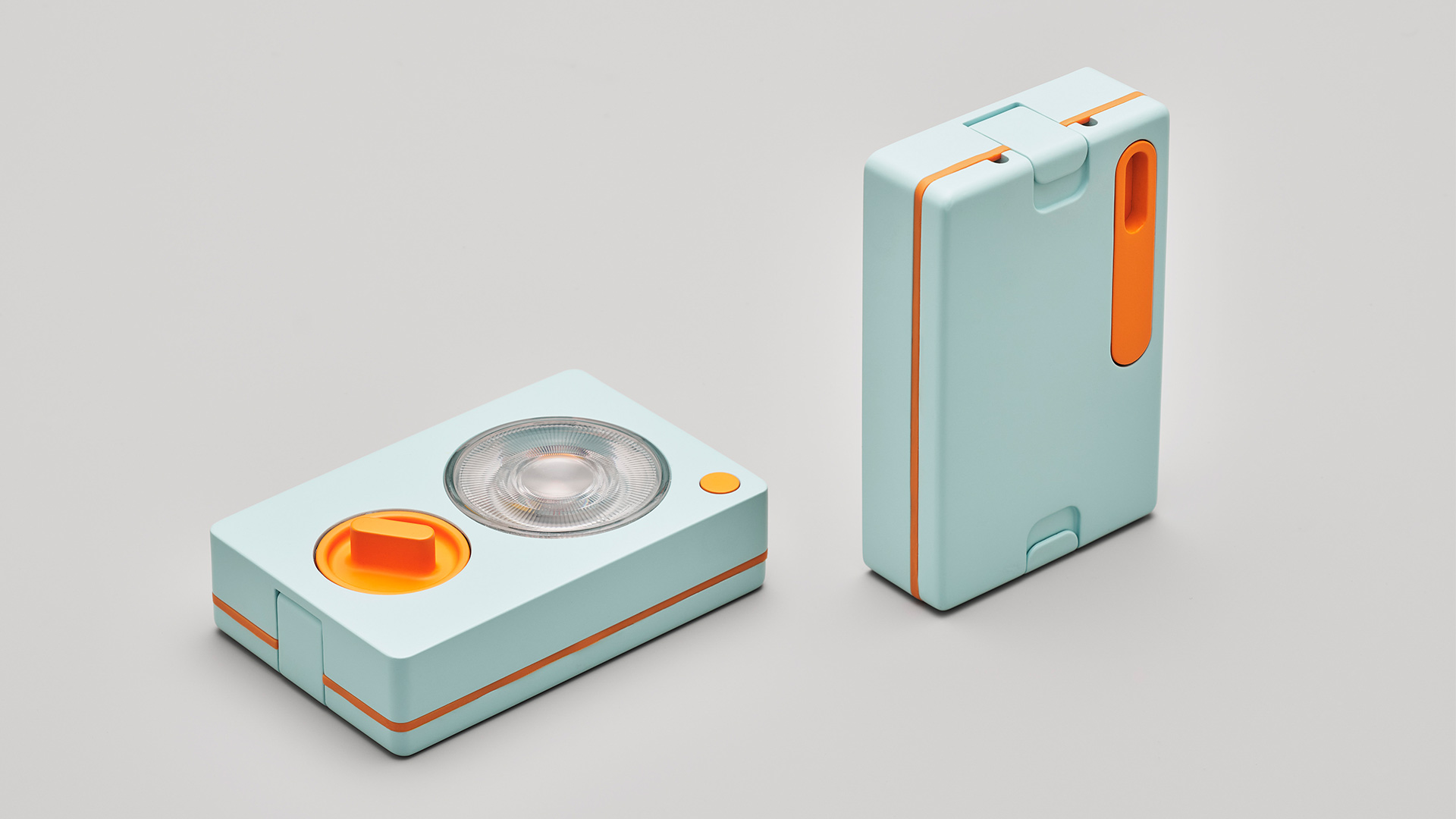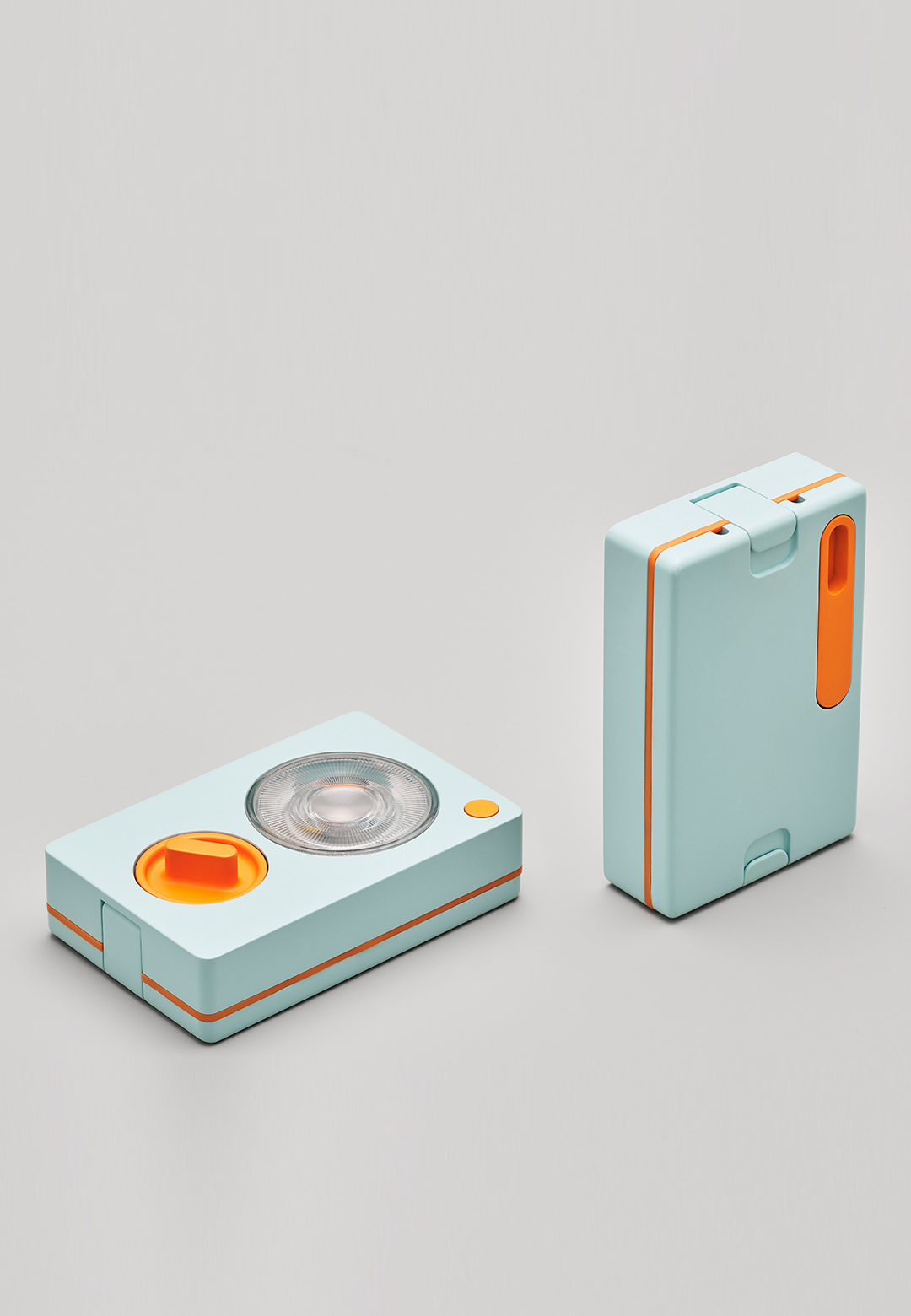Unabashed curiosity, boundless creativity, and a feral imagination in most children are inherent. Kids absolutely love taking things apart, to just see what goes where, colour-coding the components and arranging them according to size, and creating a happy mess. It is doubly fun for them to build something from scratch—give them paints and a clay kit and they are occupied for hours on end. In the same lieu, Sara Berkai, founder of social enterprise Ambessa Play approached design studio Pentagram to conceive a new DIY wind-up flashlight that would encourage children everywhere to ‘build’ and teach them STEM skills. Berkai had come up with the original concept of the product while teaching STEM workshops to displaced children in Ethiopia and Eritrea in 2019. “Ambessa means ‘lion’ in Eritrean and Ethiopian languages, and you would say ‘Ambessa!’ to a child as congratulations or well done. It can mean brave, strong, or powerful,” shares Pentagram, hinting at the industrial design’s spirit.
To spark creativity and imagination for children, the educational design was developed with Pentagram’s partner and industrial designer Jon Marshall, and through regular workshops with its intended users—displaced children (aged eight years and above). According to Pentagram, “children were involved at every stage of the process as co-creators, ensuring the designs were optimised for displaced children to provide a meaningful benefit for Ambessa Play’s one-to-one business model where for every kit purchased a displaced child receives one for free.”
When asked about the product design’s genesis, Berkai relays—“After running STEM workshops in Eritrea, I was asked by kids to design more useful products, such as a DIY flashlight. I went back into education pursuing a Master’s in Child Development at the University of Oxford to learn more about children’s self-efficacy and confidence.”
Encouraging tinkering and building with hands, the gently colourful and tactile industrial design of the DIY flashlight is conceived in a way that kids aged eight and above can assemble it themselves—they can gather the electrical components and discover more about science, bringing theory to life. “Ambessa Play was born out of a direct request from children, (while) the founder ran volunteer STEM workshops. Ambessa Play partnered with various organisations and charities and tested the kits with displaced children in Eritrea, Ethiopia, Hungary, France, and the United Kingdom,” the creators inform.
The creator launched their first Kickstarter for a DIY flashlight which children can assemble and use, and for every kit purchased, a displaced child out of school receives one for free. “Ambessa Play hopes to reach widespread distribution and gift as many displaced children in camps with a flashlight. The purpose of Kickstarter is to test and validate whether parents are interested in the one-for-one model, the campaign offers backers the option to either gift a DIY kit to a child or purchase one for their child (which would also gift one to another child),” they continue.
“By partnering with charities such as Refugee Council, Care for Calais, Project Play, and Terre des Hommes it was possible to involve children at every stage of the process ensuring the designs were optimised for displaced children to provide a meaningful benefit for Ambessa Play’s one-to-one business model. The design team had the opportunity to visit a refugee camp in Calais and also have regular meetings with children through the Refugee Council to test many early design options using functional 3D prototypes,” Pentagram relays.
Even for younglings who do have access to electricity, the Ambessa Play Flashlight rendered in baby blue with bright orange accents is a durable and useful toy to play with under bed covers. (Personally, I am convinced to get one myself). The DIY Flashlight is equipped with a battery-free design and employs a dynamo (a machine that typically converts mechanical energy into electrical energy) to charge a capacitor which powers the LED lamp for approximately 15 minutes after 1-2 minutes of winding, making it an efficient (and essential) tool to use in dark camps and shelters with no access to electricity. “Using a capacitor rather than a battery allowed the design to be compact and avoids safety issues associated with batteries,” the collaborators explain.
A clip-on handle allows for fast winding to charge the capacitor initially, and then, it can be kept topped up just by twisting the front dial of the Ambessa Play Flashlight, which is made of a casing of ABS plastic, chosen because of its long-lasting quality. Pentagram also shares that with 10 separate components and 16 build steps, the kit turns ‘learning about kinetic energy and electronic components into a hands-on adventure.’
“Working closely with Ambessa Play founder Sara Berkai, the design team’s aim was to create a distinctive, fun and attractive design that would work equally well as a STEM kit and as a usable product. Close attention was paid to pleasing tactile details that make the design memorable such as the bespoke cable connectors and the extra handle for fast winding,” shares Pentagram, about their design for children.
As end-users, children actually finalised the ‘compelling and recognisable’ design for the creators—they were asked to carefully review the flashlight’s design iterations, in various shapes and sizes, and proceeded to zero in on a flat, rectangular format as it fits right into their pockets. “They noticed that this form allowed the flashlight to function as a handheld torch, be worn around the neck with a lanyard facing forward and also placed upright on a surface as a lantern for reading,” they elaborate.
The prototype stage involved finding routes of elimination, to create a form that would balance the simplicity of assembly, and create interest in learning about its components, resulting in the easy-to-navigate layout and grouping of components that makes for a graphically pleasing tool, in tandem with a design that is easy to fashion with printed instructions. The packaging design of the Ambessa Play Flashlight was also developed to be an integral part of the product experience and support the build of the kit, replete with instructions and component organisation, in tandem with keeping sizing and material use to a minimum.
“1 for 1 means when you buy one, we give one. We initially focused on kids who live in camps and (refugee) settlements. During my MSc, professors also wanted to buy these kits for their kids, and that’s where the 1 for 1 model idea came from,” explains Berkai, who also incorporated feedback from parents longing for ‘screen-free’ toys for their own children. “A problem with the 1 for 1 model is that sometimes companies dump stuff into other countries that they didn’t ask for, or that don’t end up being used. Ambessa Play exists as a direct request from children and so we’ve prioritised kids as co-designers,” she explains further.
On their plans for future distribution, Berkai relays, “The point of the Kickstarter is to test if this 1 for 1 model works, and would parents and kids like the idea, and buy this kit for their kids. We’ve received requests for different products which would be great to work on but our priority is to test how this flashlight works in any settlements. We also know that the numbers of refugee children out of school are growing so whatever we end up doing will be focused on this directly. We plan to distribute the kits ourselves, delivering workshops in partnership with the wonderful charities we have worked with over the last two years such as Project Play or Terres Des Hommes. If you are an organisation that works with displaced children out of school or living in refugee camps and these kits would be helpful, reach out to us at hello@ambessaplay.com. If you are diaspora interested in running volunteering initiatives back home and would like to fundraise and transport kits for a volunteer project, please do email us directly as we would love to support you with any appropriate training.”
Of light, play, and hope, the Ambessa Play Flashlight is not just useful in dire situations but is a healthy way to support and inculcate hands-on learning for children, to study science through tactile methods, which we know is much more effective for kids. This DIY aspect, of putting the flashlight together with their own hands, supports and sharpens the kid’s learning acumen and helps develop their problem-solving, fine-motor, and creative skills, of channelling creativity and favouring curiosity in learning.






 Sign in with email
Sign in with email










What do you think?